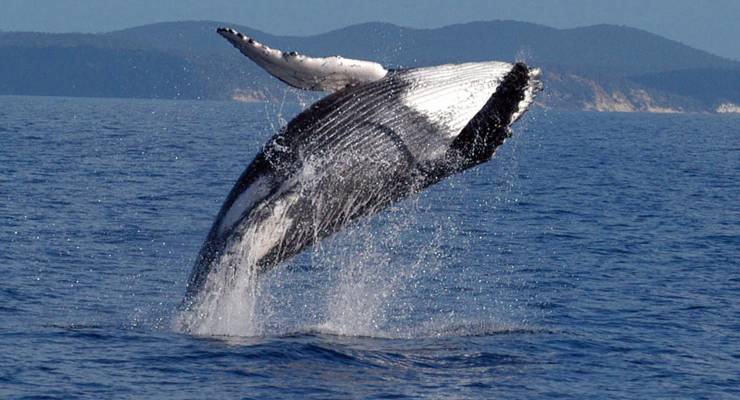
Australians greet the humpback whales’ annual migration from the shore or in whale-watching boats. But is their future secure?
In February 2022, humpbacks were judged to have made a remarkable recovery from last century’s whaling and they were removed from the Environment Protection and Biodiversity Conservation Act’s (EPBC) list of threatened species.
Humpbacks are now listed as a cetacean under the act, with offers diminished powers of protection. Delisting allowed states to list the whales as threatened but no legislation has been introduced. States’ whale-watching regulations are the extent of protection.
Climate change poses major risks to the humpback whales’ survival. Scientists are witnessing significant changes in the population caused by climate effects on feeding, breeding grounds and migratory paths. As well, warming ocean temperatures, pollution, seismic exploration and deep seabed mining projects are expanding exponentially.
In August 2022 Resources Minister Madeleine King granted approval for oil and gas exploration in 47,000 square kilometres of Australia’s marine environment, including the Bonaparte, Browse, Carnarvon and Gippsland basins.
Browse Basin is an important migration route for up to 15,000 humpback whales, according to the most recent survey undertaken in 2013 by the Kimberley Community Whale Research.
Bonaparte, Carnavon and Gippsland basins have humpback whale feeding grounds or are part of the migration route. And fin, sperm, blue, southern right and pygmy blue whales’ feeding grounds and migration pathways are in several of the basins.
Seismic operations emit significant quantities of greenhouse gases, adding to ocean acidification. Increased levels of carbon dioxide in the atmosphere create more CO2 dissolving into the ocean which then becomes more acidic. The rate at which water absorbs CO2 decreases as water temperature increases. Ocean acidification is detrimental to species that build shells and skeletons from calcium carbonate, such as krill, the whales’ primary food source in Antarctic feeding grounds.
Approval of oil and gas projects is the responsibility of the National Offshore Petroleum Safety and Environmental Management Authority (NOPSEMA). Projects are submitted for approval after the federal government grants title.
Cameron Grebe, the agency’s head of the environment division, is a former adviser and manager at Woodside Energy and Shell Global Solutions International. Whale experts are not included on the board or advisory committees.
At the same time King granted approval for oil and gas exploration, greenhouse gas storage permits were granted to Woodside and Inpex. The permits allow the companies to pursue new “carbon capture and storage (CCS)” projects offshore. Offshore CCS’s provide complex solutions involving injecting carbon dioxide into the sub-seabed, with the aim of permanent sequestration.
In 2021, Guardian Australia reported Australia’s only working onshore CCS project in Western Australia had failed to meet its target of capturing 80% of the emissions from Chevron’s Gorgon LNG project.
Dr Olaf Meynecke, a marine ecologist at Griffith University specialising in humpback research, tells Crikey offshore CCS are a bad idea: “We have to reconsider putting things in the ocean that we can’t deal with on land. For centuries people have been using the oceans as a dump. Oceans are the life support system of the planet.”
Meynecke is involved in a multidisciplinary research team focused on climate change effects on humpback whale breeding, feeding and migratory routes in the southern hemisphere. The team is seeing dramatic changes in behaviour.
“We’re starting to see shifts in migration patterns, the arrival time at feeding and breeding grounds is changing to compensate for shortages of food,” he says. “Food is the main driver of survival and diminishing access has profound impacts. Faster sea ice melt in Antarctica translates into a shorter time period for whales to get the food they need.”
With 100 other scientists Meynecke recently travelled to Antarctica to undertake research with American marine biologist Dr Sylvia Earle. This year Antarctica had the lowest sea ice amount since 1970.
Changes to krill in the whales’ high-fidelity feeding grounds can seriously affect Antarctic ecosystems. Whales may not be able to obtain sufficient food to provide the energy for a lengthy migration and calving, affecting future reproduction.
Australian marine experts published research in 2022 indicating that if environmental conditions on breeding and feeding grounds change out-of-sync, migrating whales might be unable to arrive at primary feeding grounds during optimal conditions.
Ironically, recent research estimates a great whale sequesters 33 tonnes of carbon dioxide each year on average. Saving whales is a good way to save the planet, according to a group of scientists.
Meyneke says the federal government would be wise to invest in surveys and large-scale accessible data: “Whales need feeding, breeding grounds to be secure. Flexible protection zones would make sense given that whales are shifting to new feeding areas.
“Reversing the down-listing decision under the EPBC Act would be a critical step in ensuring better protection.”








Seismic operations emit extremely loud bangs, deafening animals in the water. It seems pointless to permit their continuation in the full knowledge of zero emissions by 2050. Are we all mad, or is it just me?
Some of these siesmic noises are so powerful they kill every form of sea life in the vicinity. They know it too.
Have we learnt nothing from Chevron’s efforts?
Net zero by 2050? Yeah, right.
NOPSEMA should be defunded and disbanded, King should be sacked. But that won’t happen. All the wales will die and so will all of us.